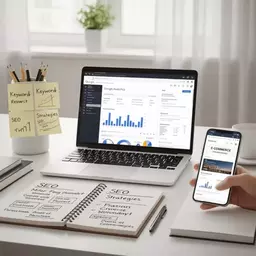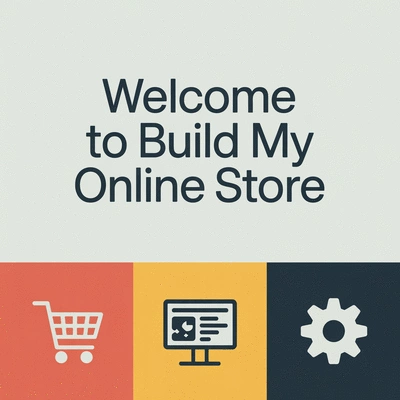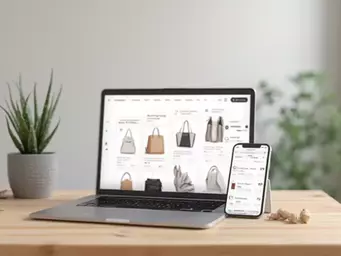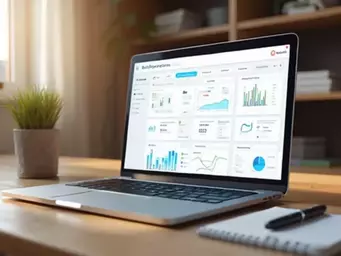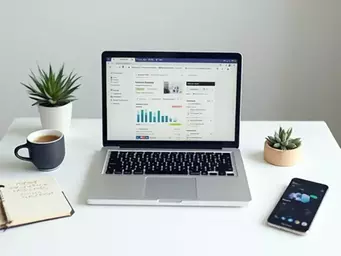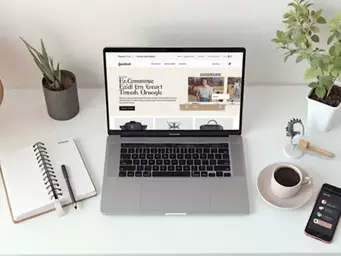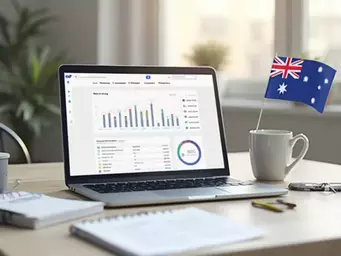What if the right design tools could revolutionize your online store? With the plethora of options available, making informed decisions is crucial for your success. This guide will empower you to select the best tools and themes tailored to your unique needs.
What You Will Learn
- The impact of design tools on efficiency and workflow for freelancers.
- Key features to consider when selecting online store design tools, such as responsive design and SEO optimization.
- A comparison of leading e-commerce platforms like Shopify, WooCommerce, and BigCommerce, highlighting their strengths.
- Essential strategies for integrating digital marketing with your design choices to boost visibility and sales.
E-commerce Platforms: Features, Usability, and Best Fit
This comparison highlights key characteristics of leading e-commerce platforms to guide selection based on business needs and technical proficiency.
Shopify
Features: Extensive app marketplace, built-in payment processing.
Usability: Very user-friendly.
WooCommerce
Features: Highly customizable, open-source.
Usability: Requires some technical knowledge.
BigCommerce
Features: Robust SEO features, multi-channel selling.
Usability: Moderate learning curve.
Understanding the Essentials of Design Tools and Themes for Your Online Store
When starting your online store, one of the first and crucial decisions you'll make is about design tools and themes. These choices can greatly affect not only how your store looks but also how it functions. As an e-commerce strategist, I can tell you that the right tools can streamline your workflow and enhance your store's overall effectiveness. Let’s dive into why these tools matter and what you should look for!
In my years of experience with Build My Online Store, I’ve seen the difference a good design can make. It’s not just about aesthetics; it’s about creating a user experience that converts visitors into customers. That’s why understanding your options is essential!
Why Choosing the Right Design Tools Matters for Freelancers
As freelancers, we wear many hats, and choosing the right design tools can help lighten our load. With so many platforms available, it’s crucial to select ones that align with your clients' needs and your workflow. Here are a few reasons why this choice is vital:
- Efficiency: The right tools can streamline your design process.
- Customization: They should allow for flexibility to meet unique client demands.
- Usability: Easy-to-use platforms ensure both you and your clients can navigate them without hassle.
By selecting tools that enhance your efficiency, you can focus more on delivering quality work and less on troubleshooting problems!
Key Features to Look for in Online Store Design Tools
Not all design tools are created equal! When evaluating options for your e-commerce projects, keep an eye out for these critical features:
- Responsive Design: Ensure your store looks great on all devices. For more insights on delivering a digital-first public experience, refer to resources like the White House Office of Management and Budget guidelines.
- SEO Optimization: Tools that help with SEO can increase your store’s visibility.
- Integration Capabilities: Look for compatibility with payment gateways and shipping services.
- Customization Options: The ability to tailor themes to fit your brand is essential. Moreover, adhering to design principles can further enhance the user experience.
With these features in mind, you can invest in tools that not only meet current needs but also adapt as your business grows!
Top E-commerce Platforms: A Comparison of Features and Usability
To make an informed decision, let’s explore some of the leading e-commerce platforms. Each one has its strengths, and understanding them can help you choose the right fit for your online store:
| Platform | Features | Usability | Best For |
|---|---|---|---|
| Shopify | Extensive app marketplace, built-in payment processing | Very user-friendly | Small to medium-sized businesses |
| WooCommerce | Highly customizable, open-source | Requires some technical knowledge | WordPress users |
| BigCommerce | Robust SEO features, multi-channel selling | Moderate learning curve | Larger businesses with significant inventory |
By understanding the differences in features and usability, you can select a platform that aligns with your goals and expertise level! Remember, the right choice can empower you to create stunning online stores and drive sales effectively.
Frequently Asked Questions (FAQs)
- Q: What are the key considerations when choosing design tools for an online store?
- A: Key considerations include efficiency, customization capabilities, and usability for both the designer and the client. The tools should streamline the design process and allow flexibility to meet unique demands.
- Q: What features are essential for online store design tools?
- A: Essential features include responsive design for optimal viewing on all devices, SEO optimization to improve visibility, integration capabilities with various payment and shipping services, and extensive customization options to align with brand identity.
- Q: Which e-commerce platform is best for small to medium-sized businesses?
- A: Shopify is often recommended for small to medium-sized businesses due to its user-friendly interface, extensive app marketplace, and built-in payment processing.
- Q: What platform is suitable for WordPress users who need an e-commerce solution?
- A: WooCommerce is ideal for WordPress users as it is highly customizable, open-source, and integrates seamlessly with existing WordPress sites, though it requires some technical knowledge.
- Q: How can digital marketing complement online store design?
- A: Digital marketing strategies such as SEO, social media marketing, and email marketing campaigns are crucial for enhancing visibility, engaging potential customers, and driving conversions. Combining stellar design with these strategies ensures long-term success.
We Want to Hear From You!
As you consider the design tools and themes for your online store, what features do you prioritize most? Is it user-friendliness, customization options, or something else entirely? Share your thoughts below:
Summarizing Key Takeaways for Freelancers
As we wrap up this comprehensive guide, it's essential to focus on the major points we've covered regarding design tools and themes. The right choices can significantly influence not only the aesthetics of an online store but also its overall performance and user engagement. Remember, every decision you make should ultimately enhance the customer experience while reflecting your client's brand identity.
Freelancers, you have the power to shape the online presence of your clients through thoughtful design choices. By leveraging the right tools and themes, you can create stunning, functional stores that convert visitors into customers. It’s all about finding the right fit for each unique project!
Final Thoughts on Choosing Design Tools and Themes
Choosing the right design tools and themes isn't just about picking something that looks good—it's about functionality, ease of use, and how well it meets your client's needs. Here are some final considerations to keep in mind:
- Assess the scope of the project to determine which platform aligns best with the goals.
- Prioritize user experience by selecting themes that offer seamless navigation. Guidance on creating accessible web designs can be found in resources like the Section 508 accessibility guidelines.
- Keep an eye on support and community resources available for troubleshooting.
Overall, remember that the right tools can make all the difference, so take your time to explore and choose wisely!
Next Steps: How to Begin Your Search for the Right Tools
Ready to dive into your search for the perfect design tools and themes? Here’s a quick guide to get you started:
- Define your project goals—what does your client want to achieve with their online store?
- Research different platforms that suit your needs, such as Shopify or WooCommerce.
- Explore theme marketplaces and read reviews to find options that resonate with your vision.
- Test out free trials or demos to get a feel for the interfaces and functionalities.
Taking these steps can help you hone in on the best tools that will elevate your client's online presence!
Exploring Digital Marketing Strategies to Complement Your Designs
Design alone isn't enough to drive success; integrating effective digital marketing strategies is crucial too. Here are some strategies to consider:
- Search engine optimization (SEO) to enhance visibility on search engines.
- Social media marketing to reach a wider audience and engage potential customers.
- Email marketing campaigns to keep your customers informed and encourage repeat visits.
By combining stellar design with solid marketing strategies, you’ll set your clients up for long-term success in the e-commerce landscape. It's about creating a harmonious balance that drives traffic and boosts conversions!
Recap of Key Points
Here is a quick recap of the important points discussed in the article:
- Choosing the right design tools enhances efficiency, customization, and usability for freelancers.
- Key features to prioritize include responsive design, SEO optimization, and integration capabilities.
- Understanding the strengths of different e-commerce platforms (Shopify, WooCommerce, BigCommerce) helps in making informed choices.
- Focus on user experience by selecting themes that ensure seamless navigation.
- Incorporate effective digital marketing strategies alongside design to boost visibility and conversions.


